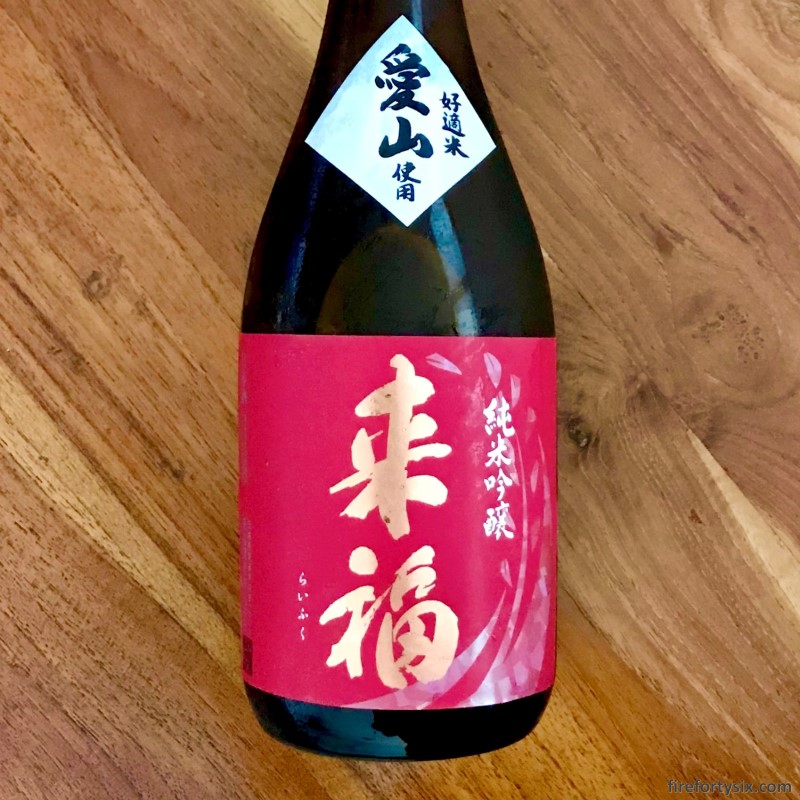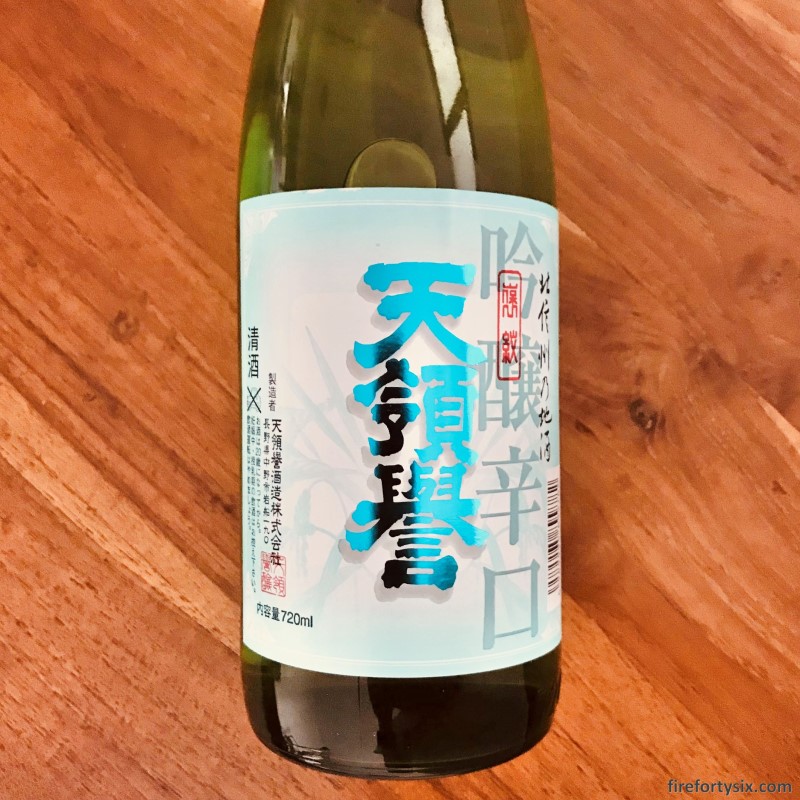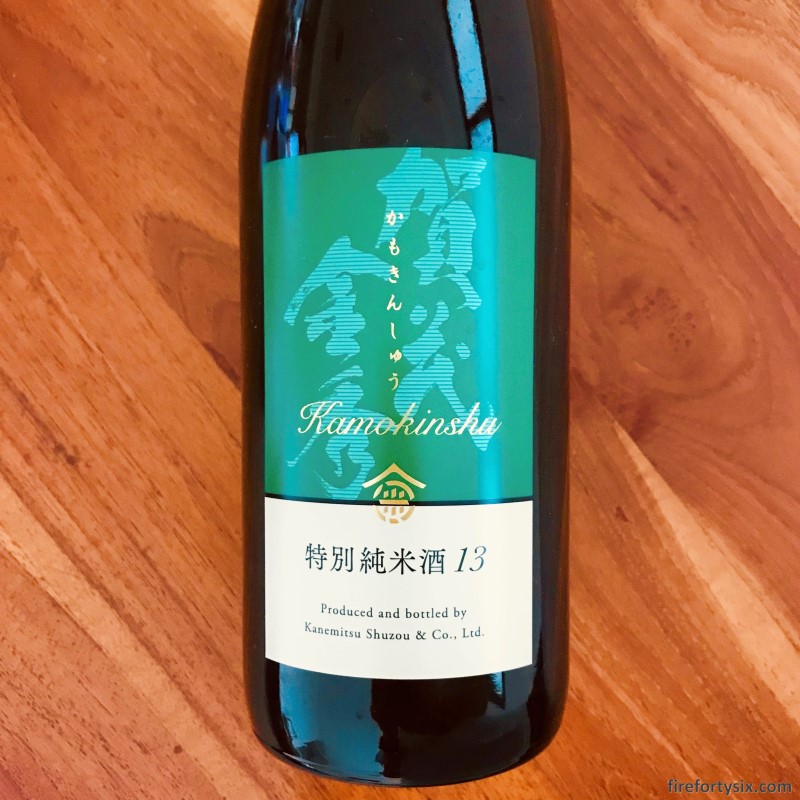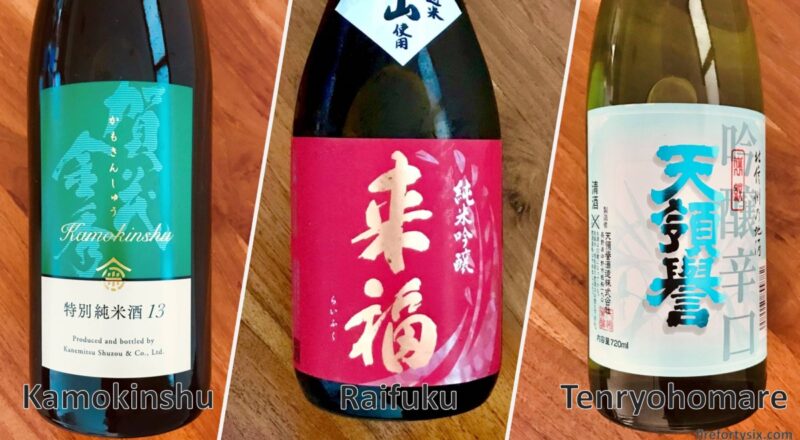When we first started our sake exploration journey, we focused mainly on junmai daiginjos. My assumption was that with a higher rice polishing ratio and no added alcohol, the resulting drink would be smoother and more delicate.
After tasting numerous bottles over an extended period, we found it to be generally true. In particular, the Keigetsu, Born and Kuheiji ones were especially oishii, with delightful notes of pineapple, banana and honey in varying degrees.
However, another observation was that, more often than not, junmai daiginjos didn’t fare so well when paired with food. Some, like the Born JDG Gold, managed to stand their ground, but most others definitely tasted better on their own.
The defining moment for us came when we signed up for an eight-course Chinese dinner featuring junmai daiginjos by Ohmine, Umenoyado, Hakkaisan, Nanbubijin and Born. The food was really good, but the pairings didn’t fare so well.
On the flip side, we’ve had several bottles of non-junmai daiginjo sake that have gone really well with meals. Of these, three are worth highlighting, starting with the Raifuku Junmai Ginjo Aiyama (来福 純米 吟醸 爱山) from Ibaraki prefecture.

We were at Tanoke for a Restaurant Week lunch and decided to indulge in some day drinking. The Wife chose a glass of yuzu sake, as expected, and I went with the Raifuku. We had chicken karaage and gobo age for appetisers, followed by hamachi/maguro and beef donburis as our mains.
The Raifuku was medium sweet and had hints of lychee and rose, and was robust enough to hold its own against the strongly flavoured dishes. When I finished the glass, I was sorely tempted to order another one. I eventually held back as my face had started to flush by then, and it was quite obvious in bright daylight.
I tried searching for the bottle online but was unsuccessful. That is, until a few months later, when it magically appeared on sakeya.sg. In addition to being a tasty drink, the bottle itself is also quite pretty, with an auspicious red and gold label with an even more auspicious 来福 displayed prominently.
Yes, I am a sucker for good packaging.
The second bottle that really impressed us was the Tenryohomare Ginjo Karakuchi (天領譽 吟醸 辛口) from Nagano prefecture.

It’s a sake that I would have never imagined that I could actually enjoy. The visible “karakuchi” (辛口) on the label was more than enough to scare me off. An open declaration that it was going to be very sharp and very dry, the exact opposite of the smooth and sweet sake that we prefer.
The only reason that I even gave it a chance was that it was part of the lineup in a sake tasting event featuring uni and ikura at Ippudo Ramen. Which, if you didn’t already know, has a surprisingly extensive sake selection on its menu.
There were six sakes to choose from that night, including the Tenryohomare, and we made the only logical choice and tried all six.
I was quite apprehensive about the Tenryohomare and drank it last, just in case it damaged my palate somehow. I know it sounds irrational, but you have to understand that this clocked in at a whopping +6.0 on the Sake Meter Value (SMV). Which, in my mind, could have irreparably damaged my tongue.
But it didn’t.
In fact, The Wife and I unanimously chose it as our favourite of the night. While it was definitely sharp and dry, it was somehow also smooth, but in a different way from delicate junmai daiginjos. On the contrary, it was bold, robust and paired really well with the rich and oily food that night.
There was also a distinct floral note that lingered, giving it a beautifully aromatic flavour. I was tempted to buy a bottle home, but decided to search online to see if I could avoid forking out the restaurant markup. Luckily, it was available on theartofsake.com for about 30% less.
I bought two bottles, one for a friend and the other for our own consumption. It didn’t stay long in the fridge and we drank it together with beef hor fun and grilled Taiwanese sausage. It went especially well with the heavily-seasoned food, and was as good as we remembered. Definitely a sake that we’ll keep going back to, again and again.
The third non-junmai daiginjo sake that we really enjoyed was the Kamokinshu Tokubetsu Junmai 13 (賀茂金秀 特別純米酒 13) from Hiroshima prefecture.

We were having dinner at Izakaya Niningashi with our friends and asked their resident sake expert for his recommendation. I told him about the Tenryohomare, and the first bottle he recommended was also from Nagano. The dry, aromatic flavour was reminiscent of the Tenryohomare and was quite nice.
It didn’t take long for us to empty it out, and the sake sommelier then suggested the Kamokinshu as an encore. And it turned out to be even better than the first bottle, slightly less dry but oh so smooth going down. We finished it even faster that the previous one, and I couldn’t help but bring the empty bottle home as a souvenir.
The next day I tried searching for it online, but couldn’t find it for sale anywhere in Singapore. Looks like the only way we’ll get to drink it again is to go back to Niningashi.
Among the three sakes, I would rank the Kamokinshu at the top, followed by the Tenryohomare and then the Raifuku. They’re quite diverse and there doesn’t seem to be a common thread that binds them.
Their SMV ranges from a balanced +0.0 to a super dry +6.0, all three are made using different rice varietals and they come from different parts of Japan. I guess the only thing that they have in common is that they are not junmai daiginjos.
| Rank | Sake | Prefecture | Rice Varietal | SMV | Acidity |
|---|---|---|---|---|---|
| 1 | Kamokinshu Tokubetsu Junmai 13 | Hiroshima | Hattan Nishiki | +4.0 | 1.5 |
| 2 | Tenryohomare Karakuchi Ginjo | Nagano | Hitogokochi | +6.0 | n.a. |
| 3 | Raifuku Aiyama Junmai Ginjo | Ibaraki | Aiyama | +0.0 | 1.4 |
One positive side effect is that non-junmai daiginjos tend to come in at a much more friendly price point. Sake in Singapore is sold at a hefty premium, compared to prices in Japan, and broadening our horizons would help moderate it somewhat.
So, in the next leg of our sake exploration journey, I’ll be making a conscious attempt to expand our boundaries. I’ll be actively looking out for bottles that we’d normally not consider, especially those that sit on the drier side of the SMV spectrum and value-for-money tokubetsu junmais.
